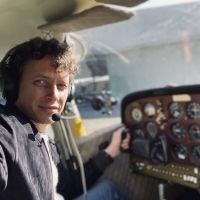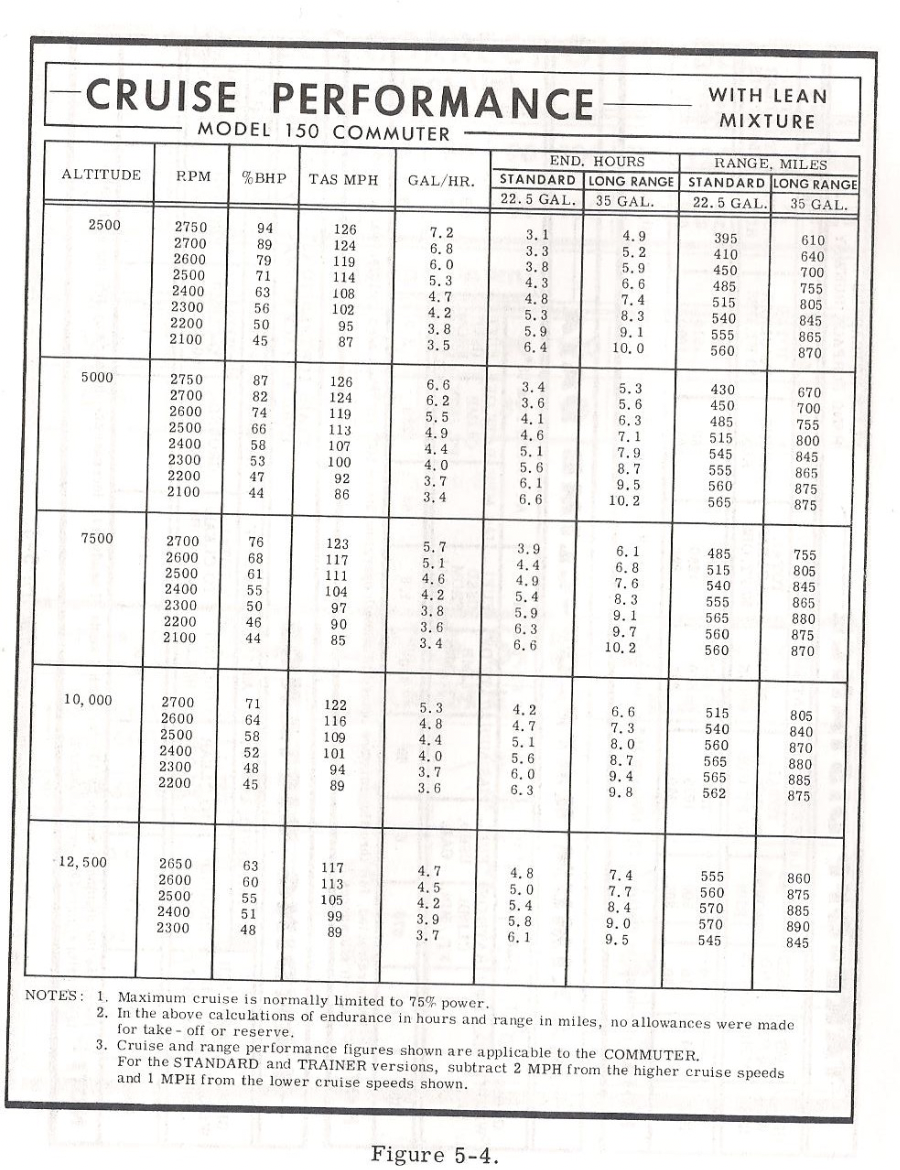Flying high with O-200 in C150 at which rpm?
Hi folks,
I get to know my plane (C150f 1966) more and more and so experienced flying FL75 last weekend. I wondered why I wasn´t faster on ground speed. So I had a look at the manual and found the cruise performance list. So obviusly flying in 2500ft with 2400rpm means 63% of engine power while same rpm in 7500ft is only 55% of power. Thus I should fly with around 2550 rpm in this alt
itude to gain around 63% of power and benefit of the thinner air regarding speed.
My question is:
1) Does this higher rpm cause more engine wear in these altitudes? Would you recommend avoiding those high alts if possible to safe the engine?
2) I don´t exactly get the point why the power is reduced (although leaning) with same rpm. Maybe the the less air resistance let´s the engine produce same rpm with less effort? Could someone explain the the relation?
3) At what rpm are you cruising the O-200 in general (also lower alt)?
Best
Nico
Thx.



Comments
Hi and thanks for writing. The air gets thinner as you go higher resulting in less air to use while burning gas. As a result, you lean and use less gas. Less gas means less power.
Scott Sherer
Wright Brothers Master Pilot, FAA Commercial Pilot
Aviation Director, Cessna Owners Organization Forum Moderator and Cessna Owners Author.
Need help? Let me know!
We have a '67 150H and recommend our members running at 2300 rpm cruise. We're essentially at sea level here on the east coast. We don't have an engine analyzer in it (yet) but recently installed one in our 182, from which we've learned a lot about leaning. Leaning the engine as you climb is important, if anything for keeping the plugs clean. Running at a lower % power prevents you from running in the 'red zone", where you can hit excessively high cylinder pressures and CHT's, which do lead to increased engine wear. Staying below 65% or so effectively prevents you from getting anywhere near those operating areas.
Also, running at a lower power setting in cruise leaves you with more power available should you be asked to climb (full power / full rich) without losing airspeed.
Thanks Scott and SalemAeroClub!
I honestly believe that if a power setting is published in your POH, you can run the engine at that setting all day if you like. Even max power is OK. Power settings are tested by the engine manufacturer and Cessna to give a reliable operating performance setting.
leaning is totally something different. I know continental engines shouldn’t be leaned above 65% power but i also believe that above 7500 it probably doesn’t matter where you put the mixture as you’ll not be getting way up into the higher power settings anyway.
Up high, In my 172 0-300 i would run it almost always WOT (following the POH rpm numbers) and lean to stumble then richen to smooth. I figured i bought the plane to fly and I want to fly as fast as i can. It went to 800 hours past TBO so i do not think i “burned” anything up operating like this
i now have a 182 with a digital engine monitor and run the engine to the numbers it gives me after selecting the throttle and prop settings from the POH. Then i lean or stay rich depending on my % power. Leaning and power settings tend to get confused with a lot of pilots. They in my opinion are mutually exclusive. My 182 naturally aspirated carbureted will run lop quite nicely at 65% power. If i really want to tool along i just use max power setting and lean to 100 ROP. It burns more fuel but i get a much higher TAS.